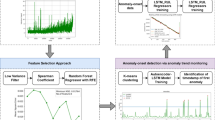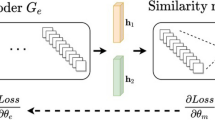Abstract
The structure, function and recognition method of an axis orbit auto-recognizing system are presented in this paper. In order to make the best use of information of format and dynamic characteristics of marine steam turbine axis orbit, the structure and functions or neural network are applied to this system, which can be used to auto-recognize axis orbit of the system turbine rotor using BP neural network.
Similar content being viewed by others
References
COLLACOTT R A. Mechanical fault diagnosis and condition monitoring[M]. London: Chapman and Hall, 1977.
SMITH D J. Monitoring/diagnostic systems enhance plant asset management[J]. Power Engineering, 1992, 96(6):23–29.
WOOD J. Invariant pattern recognition: a review [J]. Pattern Recognition, 1996, 29(1):1–17.
SHENG Zhaohan, ZHAO Lindu. On identifying roating machinery orbits of shaft centerline based on neural networks [A]. Fifth international conference on condition monitoring[C]. Xi’an, 1997.
KHANMOHAMMADI S, HASSANZADEH S. Fault diagnosis competitive neural network with prioritized modification rule of connection weights. Electrical Engineering Department, 1998.
Author information
Authors and Affiliations
Rights and permissions
About this article
Cite this article
Zhang, Y., Yang, Zd. & Xia, H. Research on pattern recognition for marine steam turbine rotor axis orbit. JMSA 2, 45–49 (2003). https://doi.org/10.1007/BF02935575
Received:
Issue Date:
DOI: https://doi.org/10.1007/BF02935575




